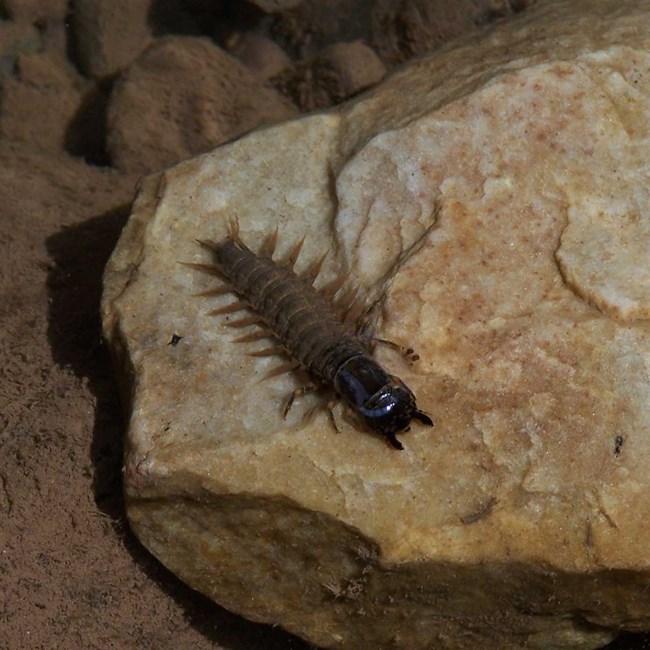
Some of the most amazing creatures of New River Gorge National Park and Preserve are found amazingly enough in the New River. Biologists have described the riverbed of the New as a carpet of macro-invertebrate aquatic life, small creatures visible without the need of a microscope. An outstanding example of one of these creatures is the hellgrammite or Dobson fly. It takes two names to describe this creature because it lives two very distinct lives. The hellgrammite is the larval stage of this insect and it lives an aquatic life. Hatching from an egg case placed on a rock ledge or branch that overhangs the river, young hellgrammites fall into the water that will become their home for one to three years. Growing to a length of two to three inches long the hellgrammite resembles a centipede with a powerful set of pinching mouthparts, but it possesses only six legs. The remainder of its body is lined with six to eight pairs of thick filaments that act as gills for underwater breathing. Hellgrammites live underneath rocks, submerged logs, and debris in the swift river currents, hunting and feeding on other macro-invertebrates. Hellgrammites are a useful in identifying the quality of their river habitats because they can survive only in relatively clean and well oxygenated water. Fisherfolk also consider them to be one of the prime live baits for smallmouth bass fishing. Be careful, hellgrammites resist capture by their ability to “pinch the blood” out of human fingers that try to pull them from the water. After years of the life aquatic, in late spring hellgrammites, often synchronized in great numbers, emerge from the water to burrow into the mud of the riverbank or find shelter under a rock or a log, in order to begin a pupal stage lasting from several weeks to a month. From this stage the creature will emerge from a complete metamorphosis into a winged Dobson fly. Dobson flies have short but intense winged lives. Males live about three days and females ten. In search for a mate, the Dobson fly does not eat, but may fly many miles over or away from the water in search of a mate. An adult Dobson fly is an impressive sight; three to four inches long with even longer wings, they definitely are a sight to see. The males especially stand out with their exceptionally long, curved pinchers. Don’t worry about a bite though, they are harmless and used only for mating. With the deposit of their white circular egg masses on objects overhanging the river the double life of this amazing creature ends. |
Last updated: January 27, 2021
